When we think of intelligence in the animal kingdom, we often picture ourselves at the top of the cognitive pyramid. However, many species possess remarkable problem-solving abilities, memory capacities, and social intelligence that can rival—and in some specialized ways surpass—human capabilities. From tool-using crows to self-aware elephants, the animal kingdom is filled with surprising intellects that challenge our understanding of cognition. This article explores twelve extraordinarily intelligent animals whose mental prowess might just leave you questioning the exclusivity of human intelligence. Each of these remarkable creatures demonstrates unique cognitive abilities that have evolved to help them survive and thrive in their environments, often solving complex problems with solutions that would impress even the most brilliant human minds.
12. Bottlenose Dolphins The Ocean’s Intellectuals
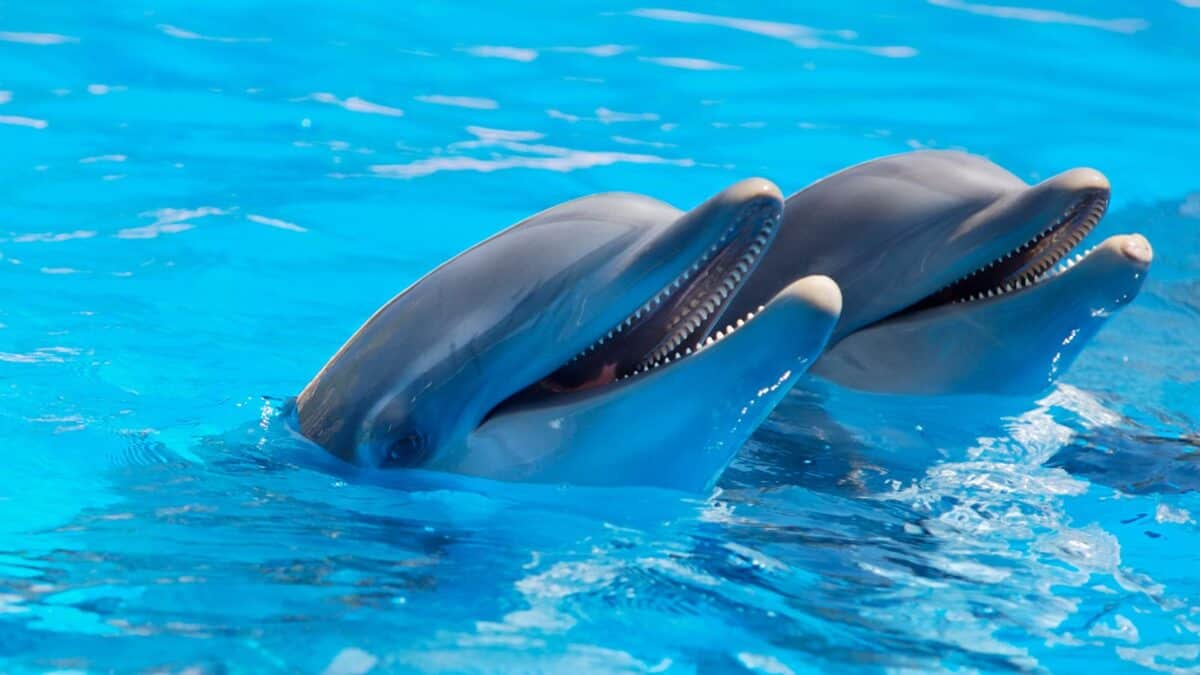
Bottlenose dolphins possess brain-to-body mass ratios second only to humans, and this neural horsepower translates into remarkable intelligence. These marine mammals can recognize themselves in mirrors—a rare ability indicating self-awareness that’s shared by only a handful of species. Dolphins also communicate using a complex system of clicks, whistles, and body language, with each dolphin developing a unique signature whistle that functions essentially as a name.
What truly sets dolphins apart is their capacity for cultural learning and tool use. In Australia’s Shark Bay, dolphins have been observed placing sponges on their snouts as protective gear while foraging on the seabed—a behavior that mothers teach to their daughters, creating a genuine cultural tradition that persists across generations. Their problem-solving abilities extend to understanding symbolic language, learning hundreds of hand signals from trainers, and even comprehending basic sentences using artificial grammar. With their playful demeanor and collaborative hunting strategies, bottlenose dolphins represent one of the most intellectually sophisticated species on our planet.
11. Chimpanzees Our Closest Intellectual Relatives

Sharing approximately 98.6% of our DNA, chimpanzees demonstrate cognitive abilities that closely mirror our own. These great apes are prolific tool users, crafting “fishing sticks” to extract termites from mounds, using stones as hammers to crack nuts, and even fashioning crude spears for hunting. More impressively, they plan for future tool use, sometimes carrying suitable implements over considerable distances in anticipation of specific tasks.
Chimpanzees excel in short-term memory tasks, often outperforming humans in tests requiring rapid memorization of numbers on a screen. They can learn human sign language, with some famous chimps like Washoe mastering hundreds of signs and even teaching them to younger chimps. Their social intelligence is equally remarkable—chimps navigate complex political hierarchies, form strategic alliances, and engage in deceptive behaviors that suggest an understanding of others’ mental states. They can even recognize fairness and unfairness in resource distribution, exhibiting emotional responses similar to human indignation when treated inequitably. These sophisticated cognitive abilities make chimpanzees not just our closest genetic relatives, but our nearest intellectual neighbors as well.
10. Elephants Giants with Exceptional Memories

The phrase “an elephant never forgets” has substantial scientific backing. Elephants possess the largest brains of any land animal (averaging about 5kg), and those neural resources support extraordinary memory capabilities. Matriarch elephants can remember specific watering holes they haven’t visited in decades and recognize individuals they haven’t seen in years. This memory extends to identifying up to 30 different elephant families—potentially hundreds of individuals—critical for their complex social networks that span generations.
Beyond memory, elephants show striking evidence of self-awareness, passing the mirror self-recognition test that stumps most species. They understand cooperation, with pairs often coordinating to pull two ends of a rope simultaneously to access food. Elephants demonstrate emotional intelligence through consoling behaviors toward distressed herd members and apparent mourning rituals for deceased companions, sometimes covering dead elephants with branches and returning to visit their bones for years afterward. They’ve even been observed painting representational artwork in captivity, with some creating recognizable images of elephants and flowers. With their combination of powerful memory, self-awareness, and emotional sensitivity, elephants exemplify how different evolutionary paths can lead to complex cognition.
9. New Caledonian Crows: Nature’s Feathered Engineers

New Caledonian crows demonstrate problem-solving skills that rival those of great apes, despite having brains the size of a walnut. These corvids craft sophisticated tools with remarkable precision, fashioning hooks from twigs and creating serrated edges on leaves to probe for insects. What’s most impressive is their capacity for sequential tool use—they can use one tool to obtain another tool, which is then used to retrieve food, demonstrating an understanding of cause and effect relationships that was once thought unique to primates.
In laboratory settings, these crows have solved complex puzzles that require multiple steps and insight. In one famous experiment called the “Aesop’s fable test,” the birds dropped stones into water to raise the level enough to access floating food—understanding water displacement principles that many children don’t grasp until age 7 or 8. Perhaps most remarkably, New Caledonian crows appear to engage in mental planning, creating tools for future use rather than immediate needs. They also pass knowledge through social learning, with juveniles observing and mimicking the tool-making techniques of experienced adults. The cognitive achievements of these birds challenge our assumptions about brain size as a limitation on intelligence and suggest that evolutionary pressures can produce sophisticated cognition through diverse neural pathways.
8. Octopuses The Intelligent Aliens of Our Oceans
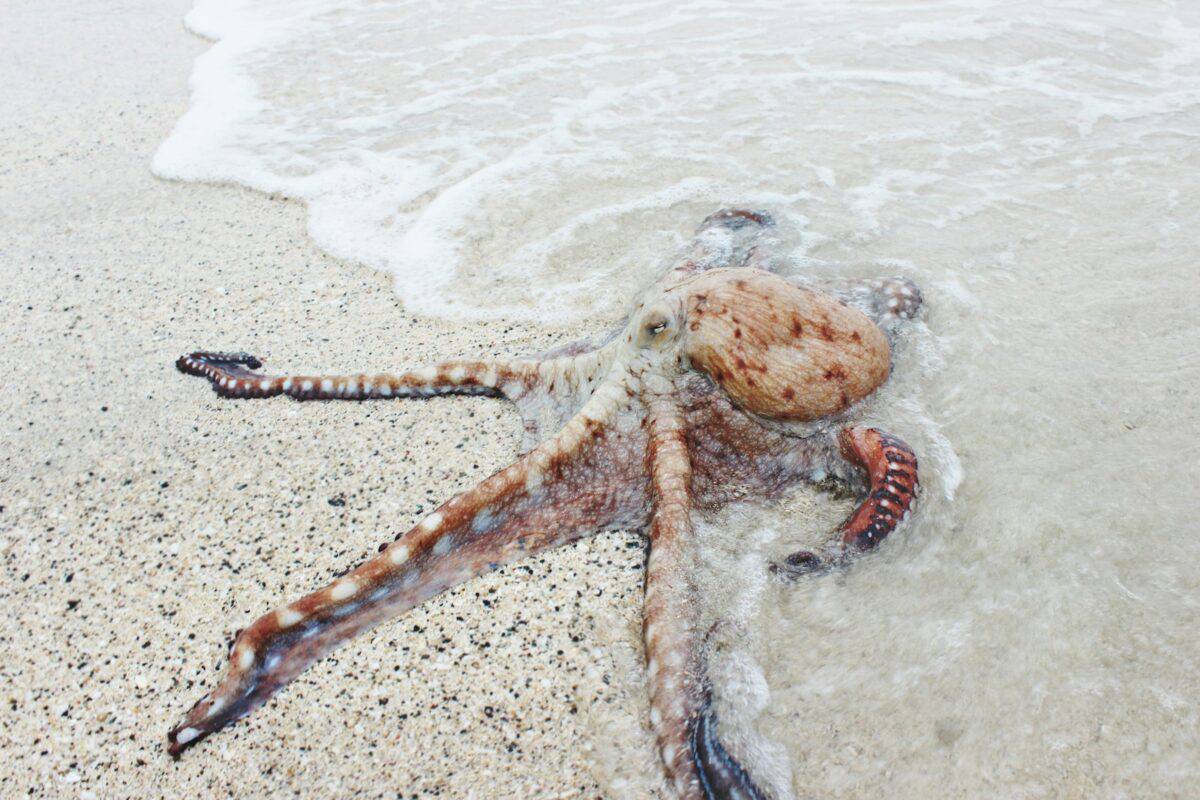
Octopuses represent a form of intelligence utterly alien to our own. Unlike vertebrates, whose intelligence evolved through a centralized brain, octopuses have a distributed nervous system with two-thirds of their neurons located in their arms. This unique architecture grants each arm a degree of autonomy—they can solve problems and manipulate objects even when disconnected from central control. Despite evolving along a completely separate evolutionary path from vertebrates for over 500 million years, octopuses have independently developed complex problem-solving abilities.
The cognitive flexibility of octopuses is legendary among marine biologists. They can open childproof pill bottles, solve mazes, and disassemble complex objects like Lego sculptures. Octopuses are notorious escape artists, squeezing through tiny openings, unlocking tanks from the inside, and even shorting out annoying lights by deliberately squirting water at electrical outlets. They recognize individual humans, distinguishing between keepers who feed them and those who don’t, and can develop preferences or aversions to specific people. Some species collect and use tools, gathering coconut shells to create portable shelters. Perhaps most impressively, octopuses can learn through observation alone—watching another octopus complete a task often enables them to perform it on their first attempt. Their short lifespan of just 1-2 years makes these accomplishments even more remarkable, as they acquire these skills rapidly without the benefit of long-term learning or parental guidance.
7. Border Collies The Einsteins of the Canine World
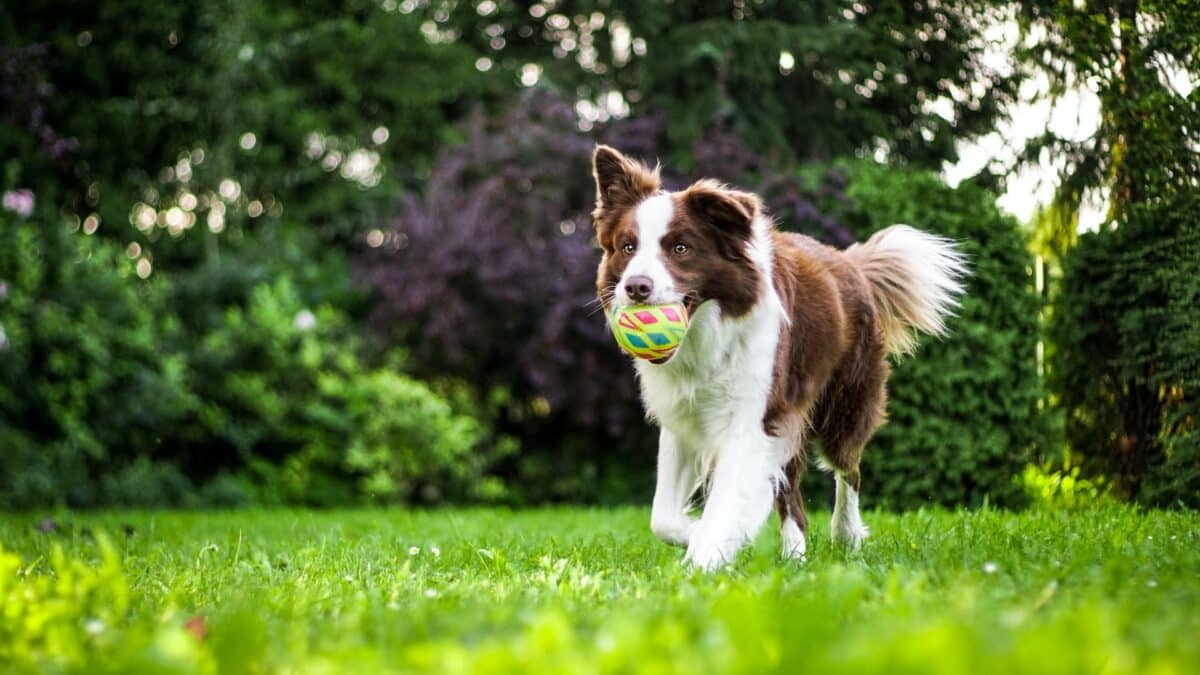
Border collies consistently rank as the most intelligent of domestic dog breeds, with cognitive abilities that outpace their canine cousins. Originally bred to herd livestock through complex commands, their working heritage has endowed them with extraordinary learning capacities. The average border collie can learn the names of over 200 different objects, responding correctly when asked to retrieve specific items by name. Some exceptional individuals have pushed this boundary even further—a border collie named Chaser learned the names of 1,022 distinct toys and could retrieve them on command, demonstrating both impressive memory and language comprehension.
What truly distinguishes border collies is their ability to understand complex concepts through inference. They can learn new words through exclusion learning—presented with a familiar object and an unfamiliar one alongside a new word, they’ll correctly associate the new word with the unfamiliar object. They excel at understanding human communicative gestures, often following pointing cues more successfully than chimpanzees. Border collies also demonstrate remarkable problem-solving skills, finding creative solutions to obstacles and showing persistence when faced with challenges. Their combination of attentiveness to human cues, rapid learning, and problem-solving makes them not just working partners but cognitive companions who can sometimes anticipate their owners’ intentions before they’re even expressed—a level of social cognition that makes these dogs particularly adept at understanding the human mind.
6. Ravens The Strategic Thinkers of the Bird World
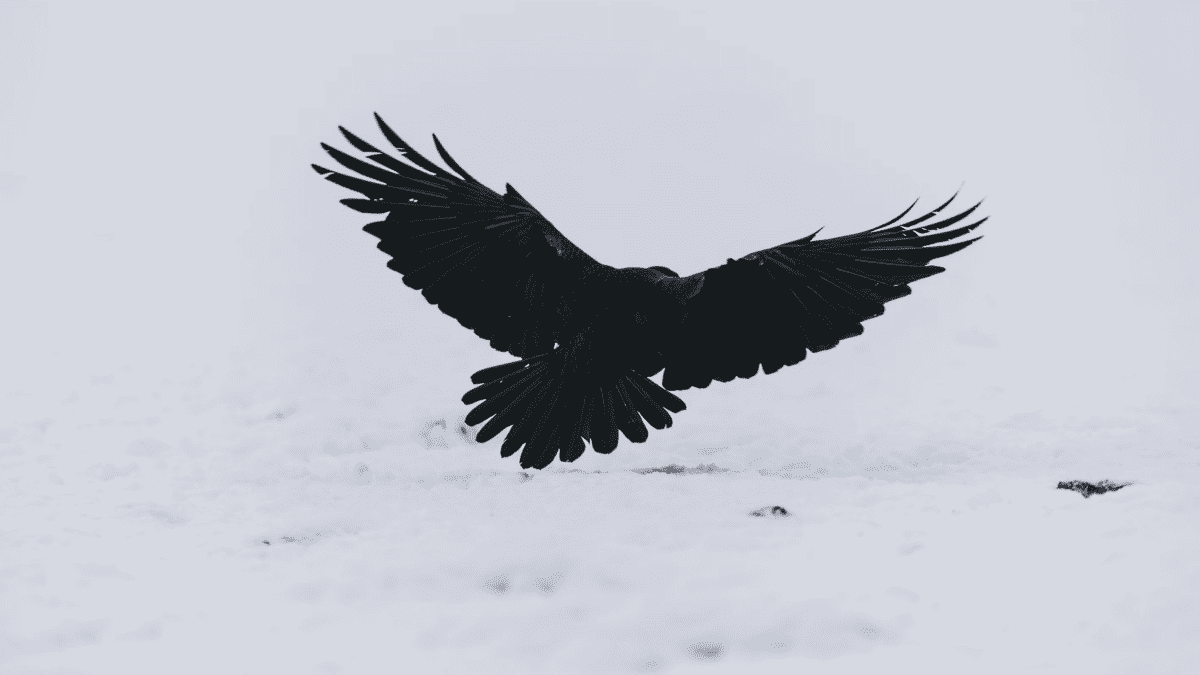
Ravens possess cognitive abilities that have earned them the nickname “feathered apes” among researchers. These birds excel at planning for the future—a capability once thought exclusive to humans and great apes. Ravens will save tools they expect to need later and trade tokens for food rewards, demonstrating an understanding of delayed gratification. They can solve complex sequential puzzles that require executing up to eight distinct steps in the correct order, showing causal reasoning comparable to that of 7-year-old children.
The social intelligence of ravens is particularly sophisticated. They form alliances, remember individuals who have cheated them in exchanges, and engage in tactical deception—creating diversions to steal food when competitors aren’t looking. Ravens understand the concept of fairness in social interactions and will refuse to participate in exchanges they perceive as inequitable. Perhaps most impressively, ravens appear to have a theory of mind—they can attribute mental states to others, hiding food more carefully when they believe they’re being watched by potential thieves. They engage in play behavior that suggests imagination, sliding down snowy slopes repeatedly for what appears to be pure enjoyment, and using objects in creative ways during play sessions. These cognitive abilities, combined with their long lifespans of up to 30 years in the wild, make ravens among the most intellectually sophisticated birds on the planet.
5. Pigs The Surprising Scholars of the Farmyard

Pigs challenge our preconceptions about livestock intelligence with cognitive abilities that surpass those of dogs in many domains. These highly social animals possess impressive long-term memories, recognizing familiar pigs and humans even after years of separation. Their problem-solving capabilities are particularly noteworthy—pigs can manipulate joysticks with their snouts to move cursors on computer screens, matching the performance of primates in simple video games. They quickly learn to understand mirrors, using reflections to locate hidden food and showing signs of self-recognition.
The learning capacity of pigs extends to symbolic communication. They can learn to respond to verbal commands, with some individuals mastering vocabularies of over 20 distinct words. Pigs demonstrate time perception and anticipation, showing excitement before regular feeding times. Studies have revealed that pigs engage in social learning, watching and imitating others to solve problems more efficiently, and they can use tools in simple ways—such as employing sticks to dig or move objects. They’re also among the few animals that show metacognition—an awareness of their own knowledge state—as evidenced by their behavior in experiments where they must decide whether to attempt a task based on their confidence in knowing the correct response. This sophisticated suite of cognitive abilities makes pigs among the most intelligent domestic animals, challenging our ethical frameworks regarding their treatment in agricultural settings.
4. African Grey Parrots: The Vocabulary Virtuosos
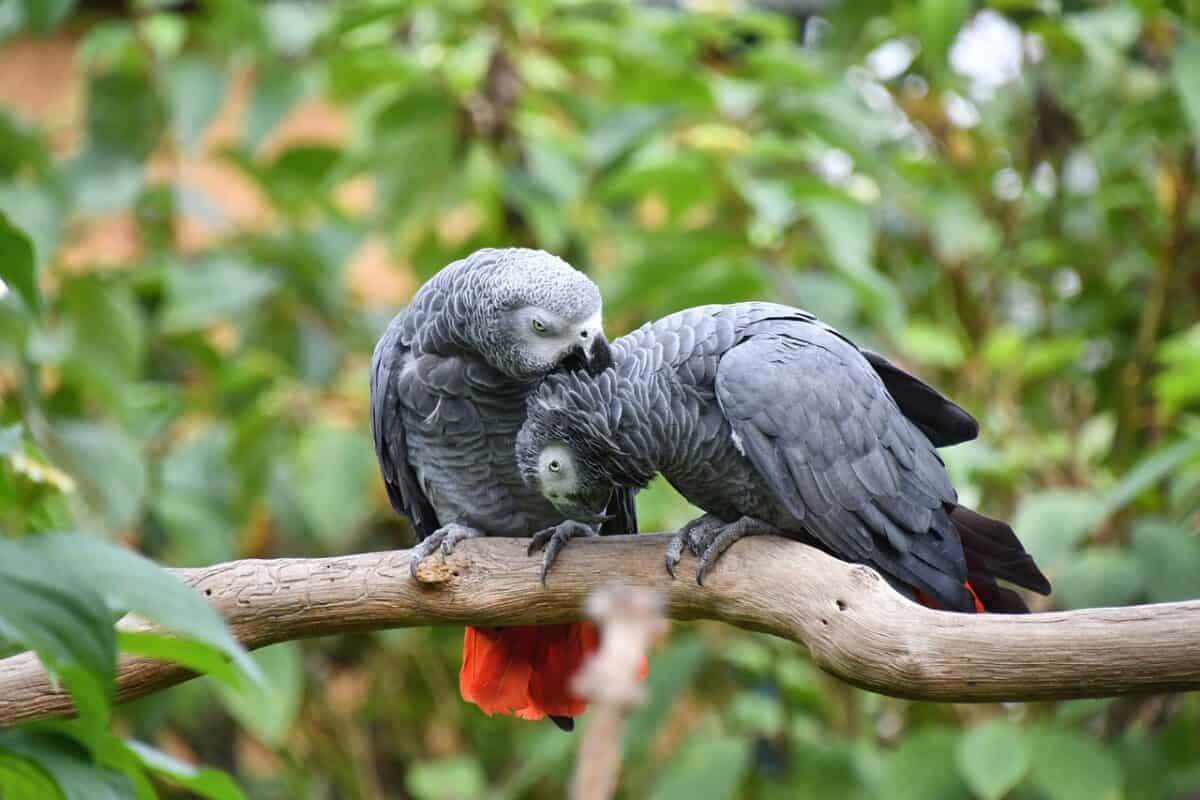
African Grey parrots possess linguistic abilities that transcend mere mimicry, approaching genuine language comprehension. The most famous example is Alex, studied by Dr. Irene Pepperberg, who acquired a vocabulary of over 100 words and could identify 50 different objects, seven colors, and five shapes. More impressively, Alex demonstrated understanding of abstract concepts like “same” and “different,” “bigger” and “smaller,” and even rudimentary numerical concepts, counting up to six objects accurately. When asked about the color of an object, Alex would respond not just with automatic phrases but with the correct color term—indicating true comprehension rather than conditioned responses.
Beyond vocabulary, African Greys demonstrate logical reasoning abilities comparable to 4-5 year old children. They can sort objects into categories based on properties like color and shape, understand cause and effect relationships, and solve problems requiring multi-step solutions. Their social intelligence is equally impressive—these birds can interpret human emotional states, adjust their behavior based on the mood of their caretakers, and even show empathy through consoling behaviors. Some African Greys have been documented using deception, deliberately misleading other birds about food locations. Perhaps most remarkably, these parrots have shown the ability to generate novel vocalizations to name new objects, suggesting creative language use rather than rote repetition. With neural densities in certain brain regions exceeding those of primates, African Greys represent some of the most sophisticated avian minds on the planet, challenging our understanding of the relationship between brain structure and cognitive complexity.
3. Orangutans The Forest Engineers

Orangutans display a form of intelligence uniquely adapted to their arboreal lifestyle. These great apes are master tool users and innovators, crafting specialized implements for specific tasks with remarkable ingenuity. They fashion “umbrellas” from large leaves during rainstorms, create “gloves” from leaves to handle spiny fruits, and construct complex “hammers” to crack open nuts. Most impressively, they manufacture “fishing rods”—carefully selected sticks stripped of leaves and shortened to the optimal length—to extract insects from crevices or honey from bee nests.
What distinguishes orangutan intelligence is their extraordinary problem-solving through trial and error. In captivity, they’ve been observed using water as a tool—collecting it in their mouths to spit into tubes and raise floating objects within reach. They regularly outsmart containment systems in zoos, dismantling complex locking mechanisms and finding creative escape routes. Orangutans also demonstrate cultural learning, with different populations developing unique tool traditions that are passed down through generations. Their spatial cognition is particularly impressive—they create detailed mental maps of fruit tree locations and ripening times across vast forest territories, planning efficient routes that minimize energy expenditure. With the longest childhood dependency period of any non-human animal (juveniles remain with their mothers for 8-9 years), orangutans have extended learning periods during which they acquire the complex knowledge and skills necessary for survival in their challenging forest environment. Their combination of technical prowess, innovation, and cultural transmission makes orangutans among the most intellectually sophisticated of the great apes.
2. Rats The Underestimated Urban Geniuses

Rats possess cognitive abilities that far exceed their reputation as mere pests. These highly social rodents demonstrate metacognition—awareness of what they know and don’t know—a sophisticated mental capability once thought unique to primates. When faced with difficult decisions in laboratory tasks, rats will opt out of trials where they’re uncertain, showing that they can assess their own knowledge state. Their spatial memory is particularly impressive, allowing them to navigate complex mazes after just a single exposure and remember the locations of up to 15 food sources in their territory.
The social intelligence of rats reveals unexpected depth. They engage in reciprocal altruism, helping rats who have previously helped them and withholding assistance from those who haven’t—suggesting they track social debts. Rats demonstrate empathy, actively working to free trapped cagemates even when there’s no reward for doing so, and sometimes even sharing food with hungry companions at personal cost. They’re capable of learning by observation, acquiring new skills more quickly after watching experienced rats perform them. Rats also show sophisticated causal reasoning, understanding that their actions can trigger events in their environment and adjusting their behavior accordingly. Their ability to adapt to almost any environment and solve novel problems—from defeating complex traps to gaining access to secured food sources—demonstrates a behavioral flexibility that has allowed these small-brained mammals to thrive alongside humans despite constant eradication efforts. This cognitive versatility challenges our assumptions about the relationship between brain size and intelligence.
1. Bees Collective Intelligence in Miniature Brains

Bees demonstrate that remarkable intelligence can emerge from seemingly simple neural systems. With brains containing fewer than one million neurons (compared to the human brain’s 86 billion), individual honeybees accomplish cognitive feats that seem impossible for their brain size. They can learn abstract concepts like “same” and “different,” recognize human faces, and understand zero as a mathematical concept—an ability previously demonstrated only in vertebrates. Bees can calculate the shortest possible route between multiple locations, effectively solving the complex “traveling salesman problem” that challenges sophisticated computers.
What truly distinguishes bee intelligence, however, is their collective cognition. Through sophisticated communication systems like the waggle dance, bees transmit precise spatial information about food sources, sharing the direction, distance, and quality of nectar finds with hive mates. When selecting new home sites, scout bees engage in a democratic decision-making process, advocating for different locations through dance intensity, then reaching consensus on optimal sites
Conclusion:
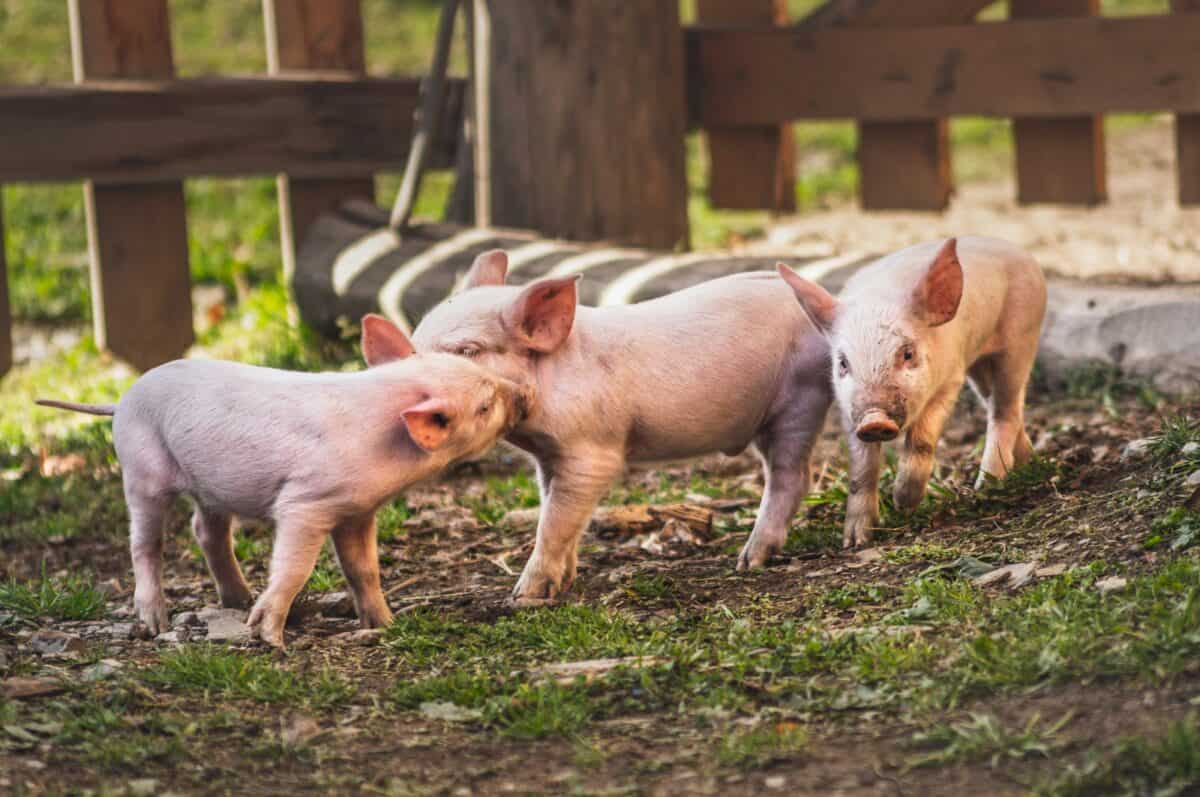
The extraordinary intelligence observed across the animal kingdom reveals that human cognition, while exceptional, is not alone in its complexity or sophistication. From the tool-making ingenuity of New Caledonian crows to the social savvy of rats and the linguistic brilliance of African grey parrots, each species demonstrates a unique expression of intelligence finely tuned to its environment and evolutionary pressures. These animals challenge the traditional human-centered hierarchy of intellect, proving that intelligence is not a singular trait but a diverse set of abilities—memory, problem-solving, social understanding, self-awareness, and even cultural learning. Recognizing this broad spectrum of animal cognition invites us to rethink our relationship with other species, fostering greater respect, empathy, and ethical consideration for the brilliant minds that share our planet.
- 12 Brainy Beasts That Can Outsmart You - August 10, 2025
- 14 Lizard Species That Can Regrow Their Tails - August 10, 2025
- Animal Rights Violation Issues in The United States - August 10, 2025

